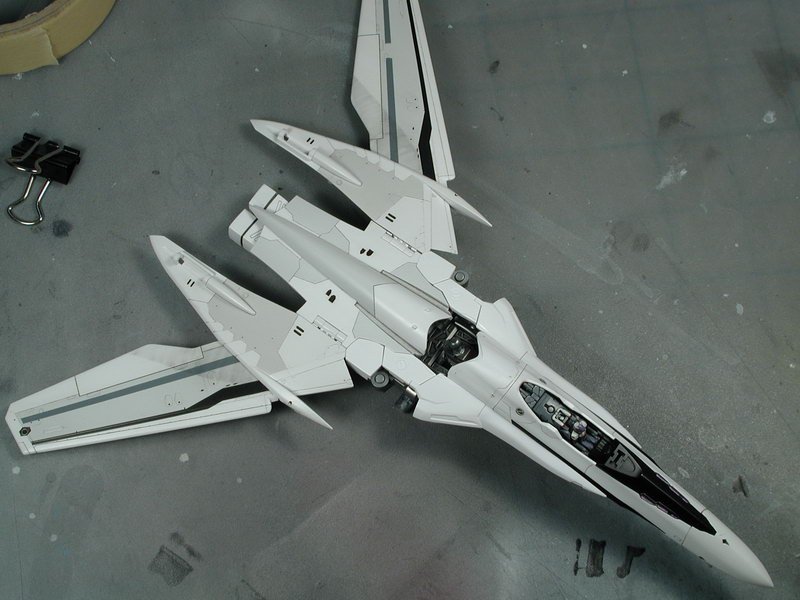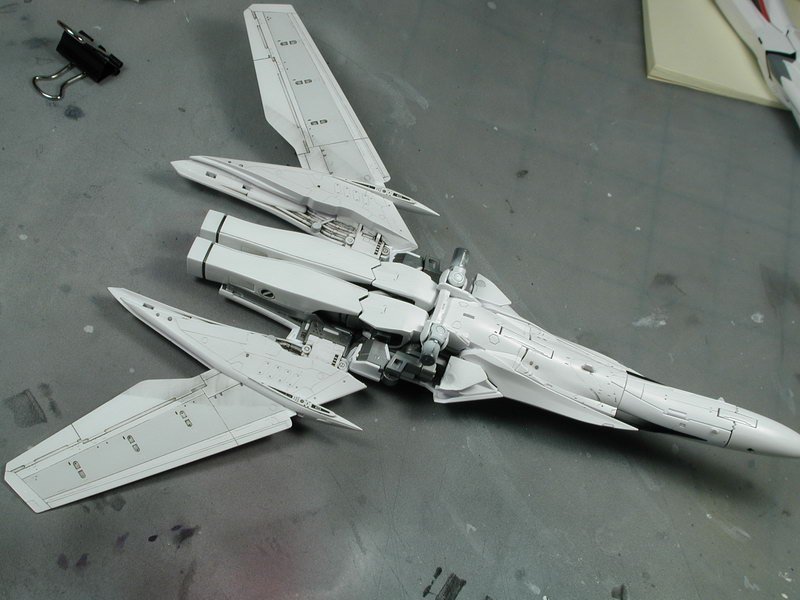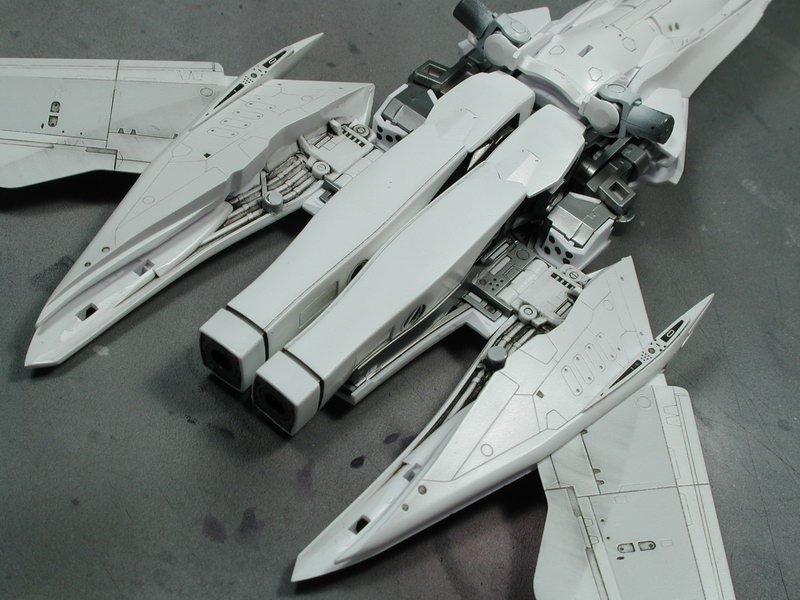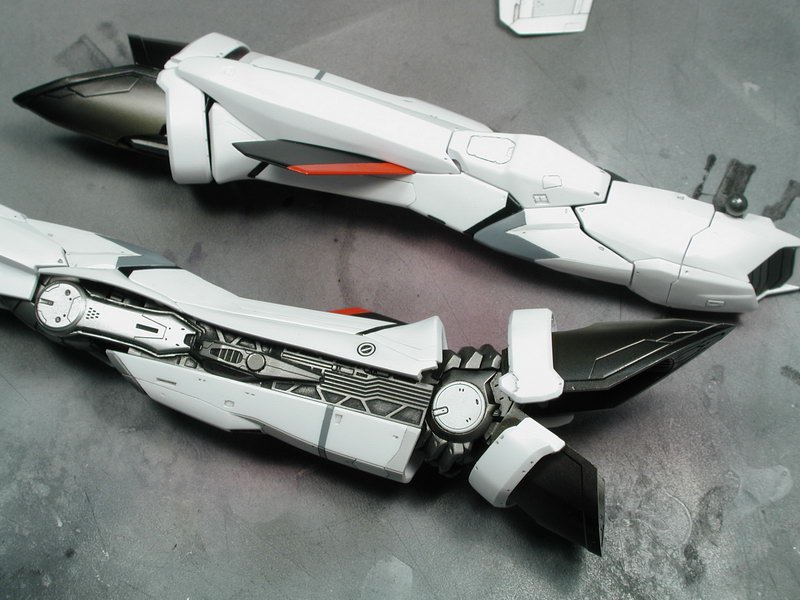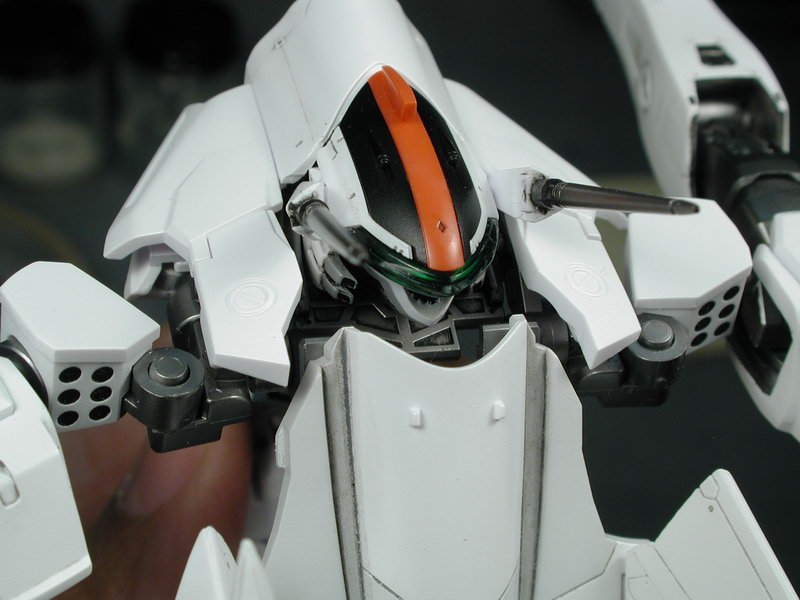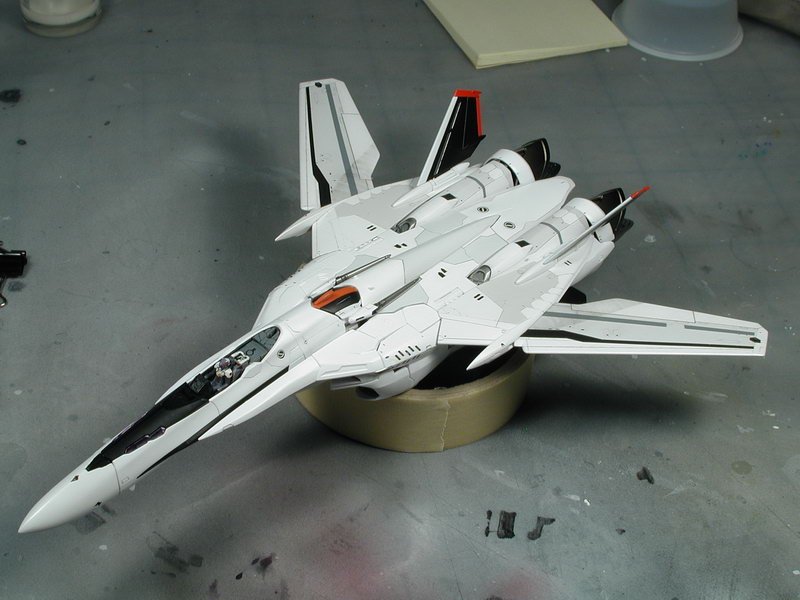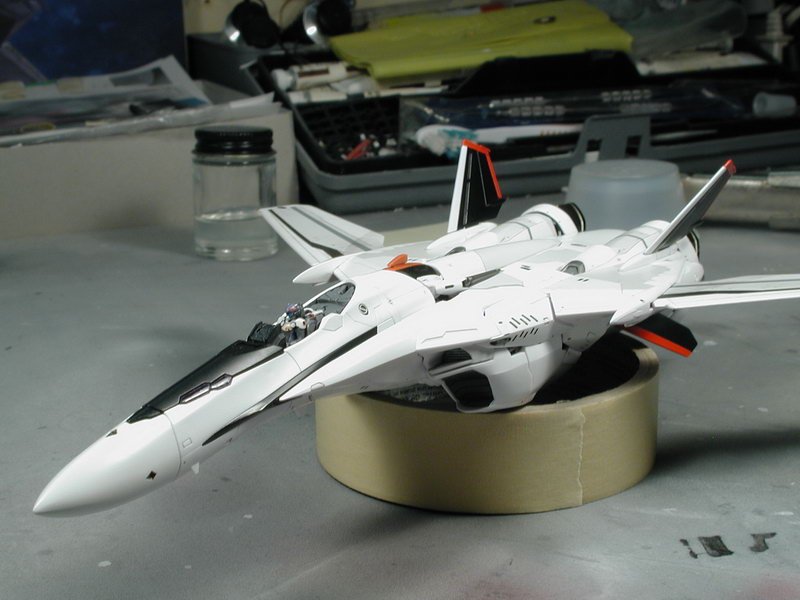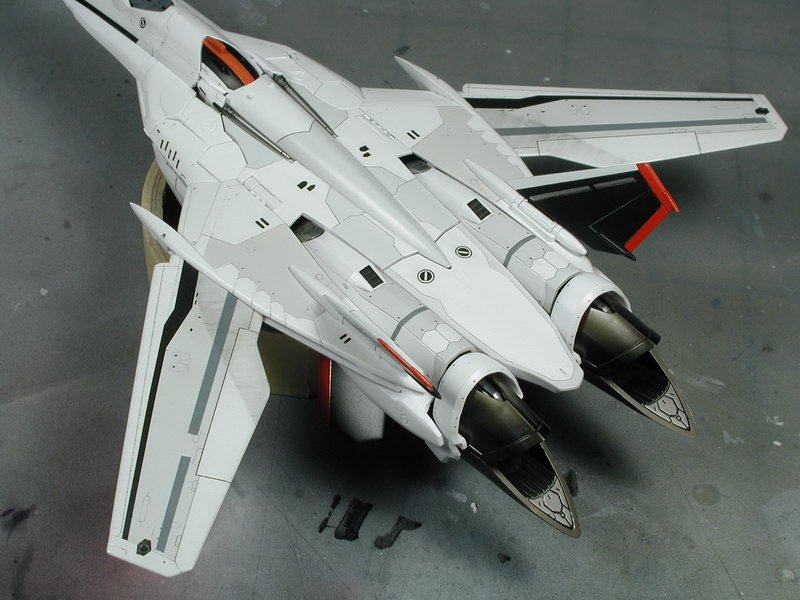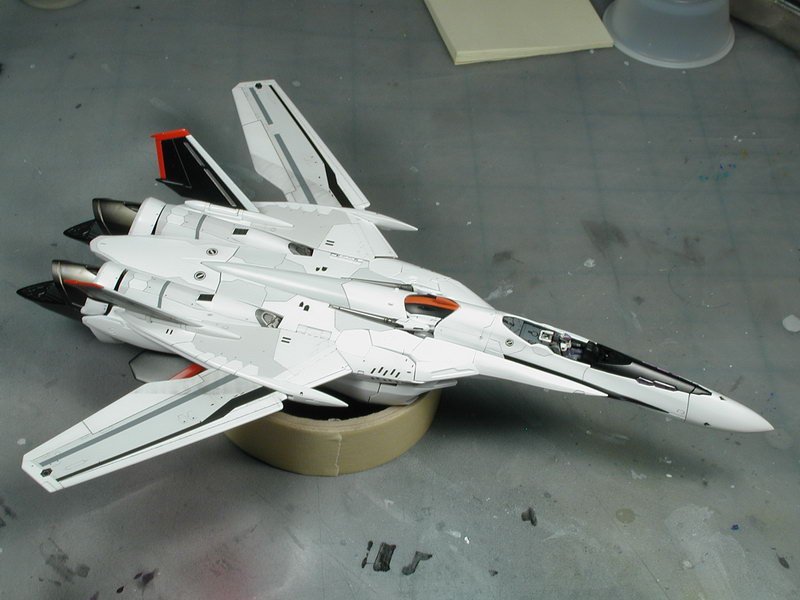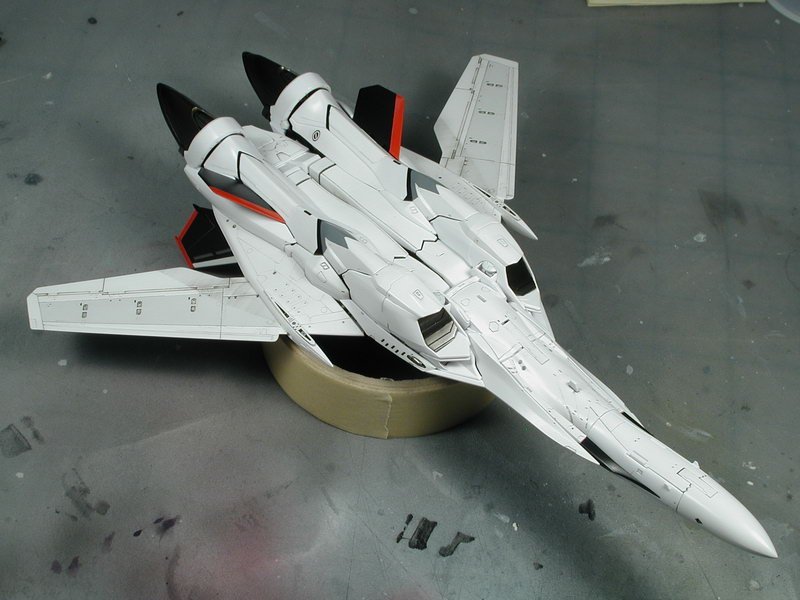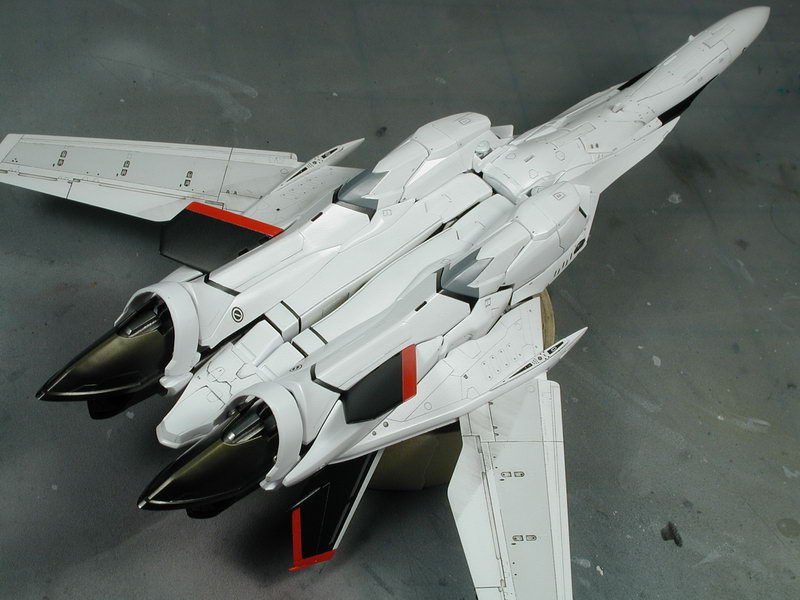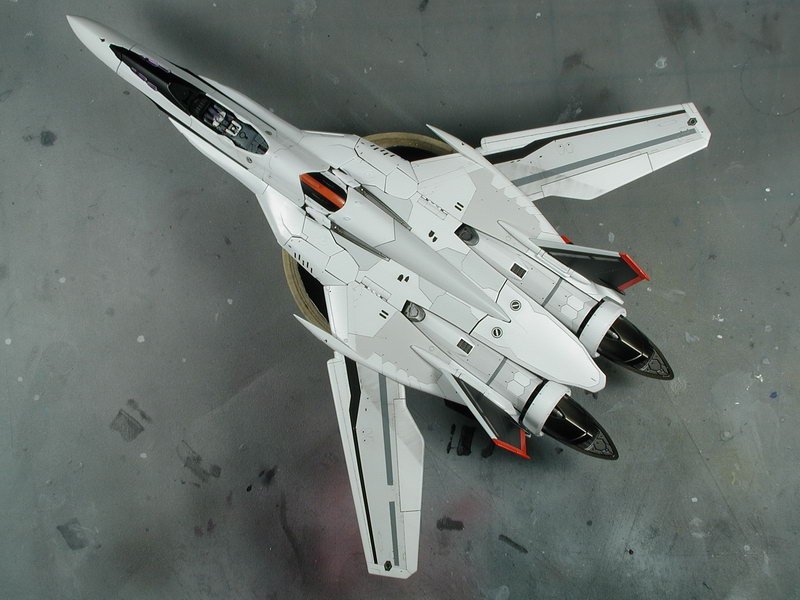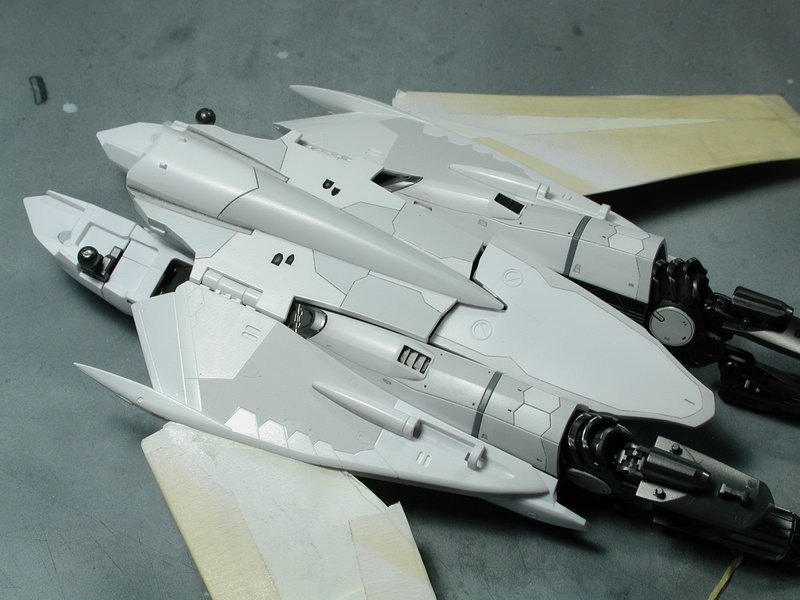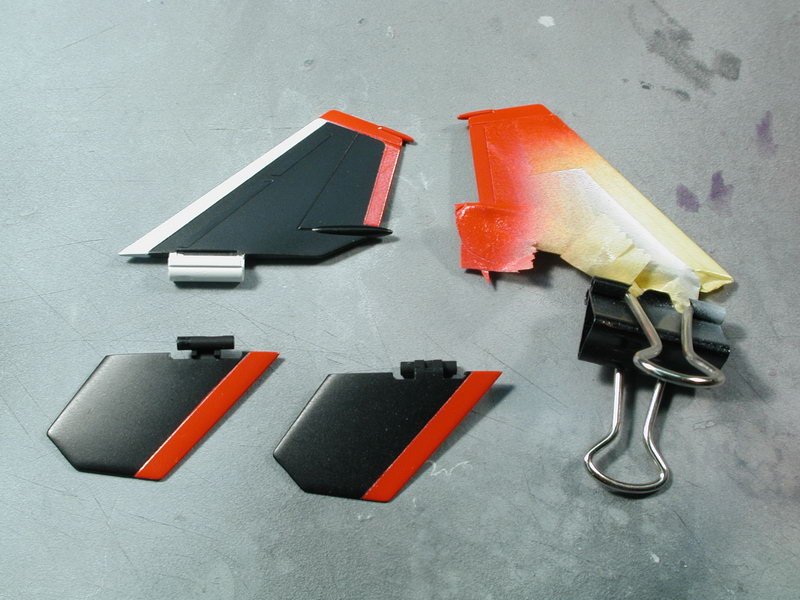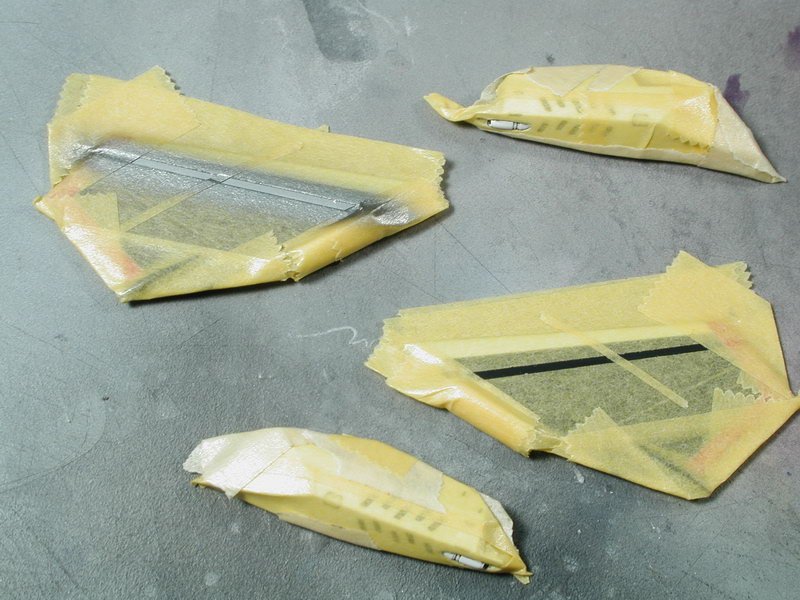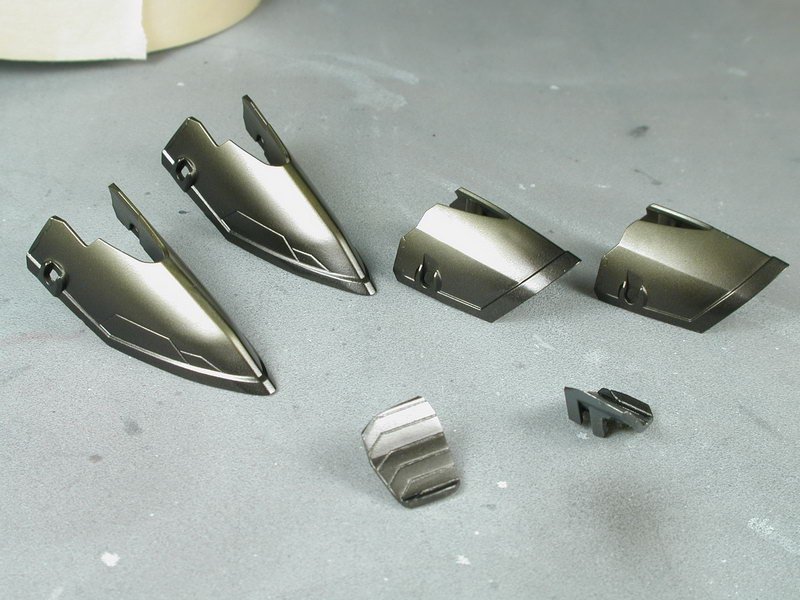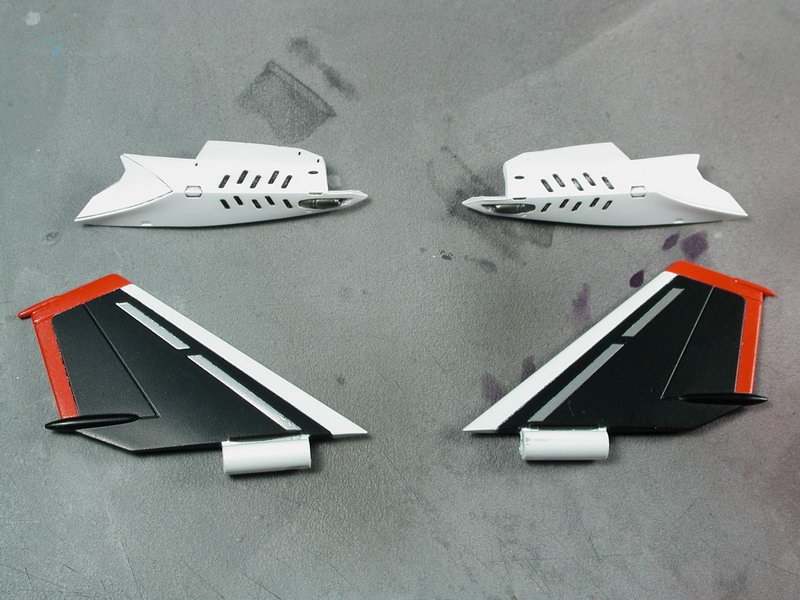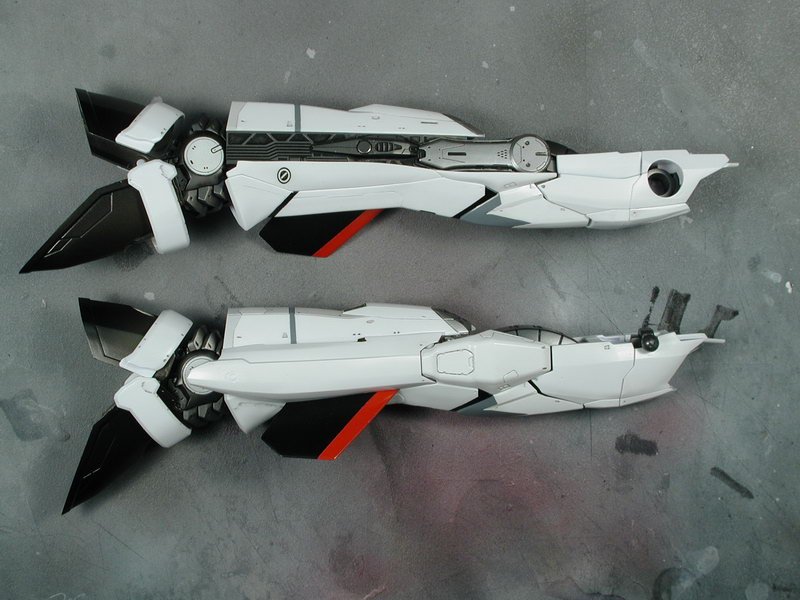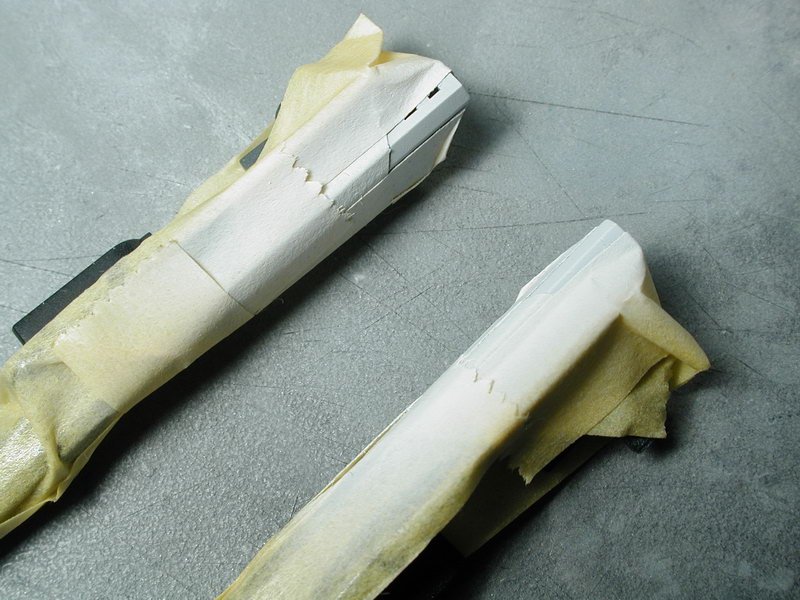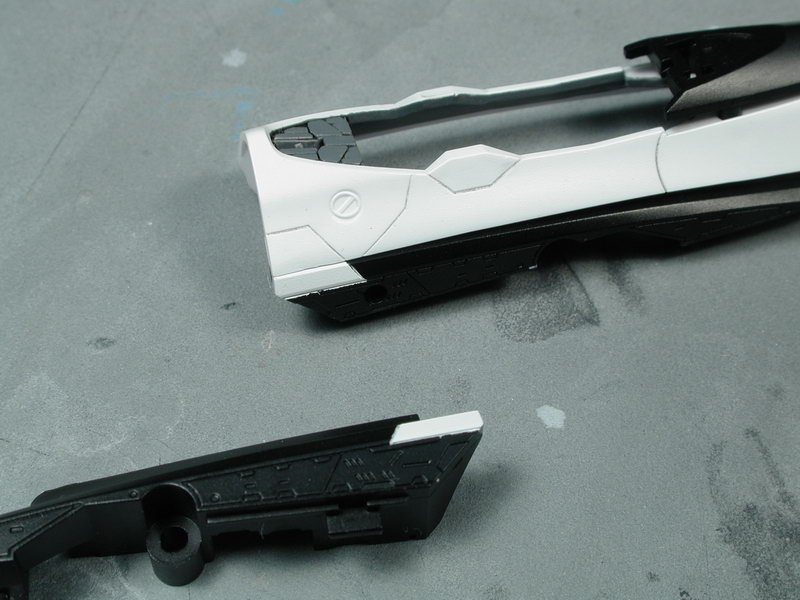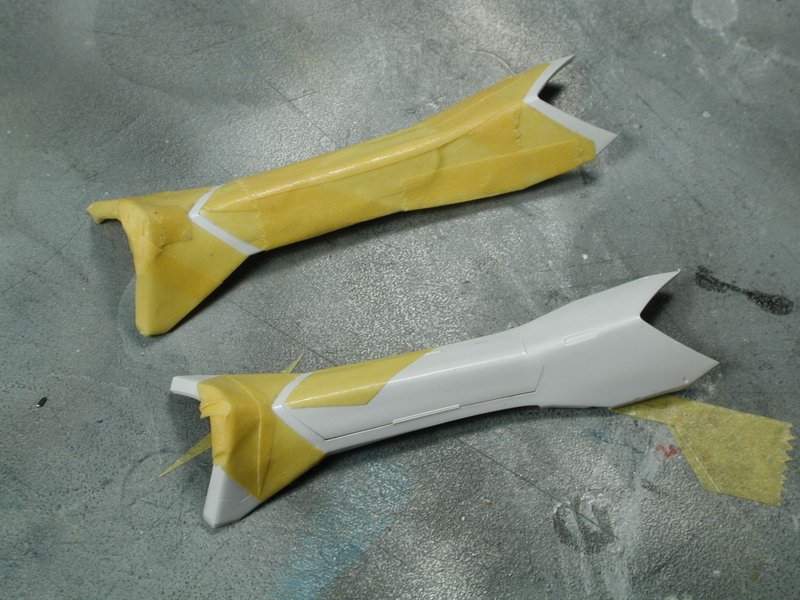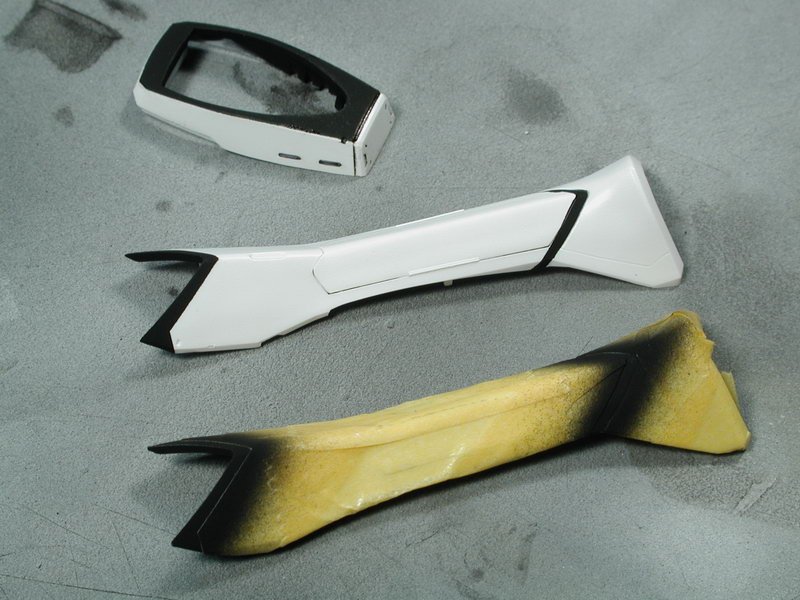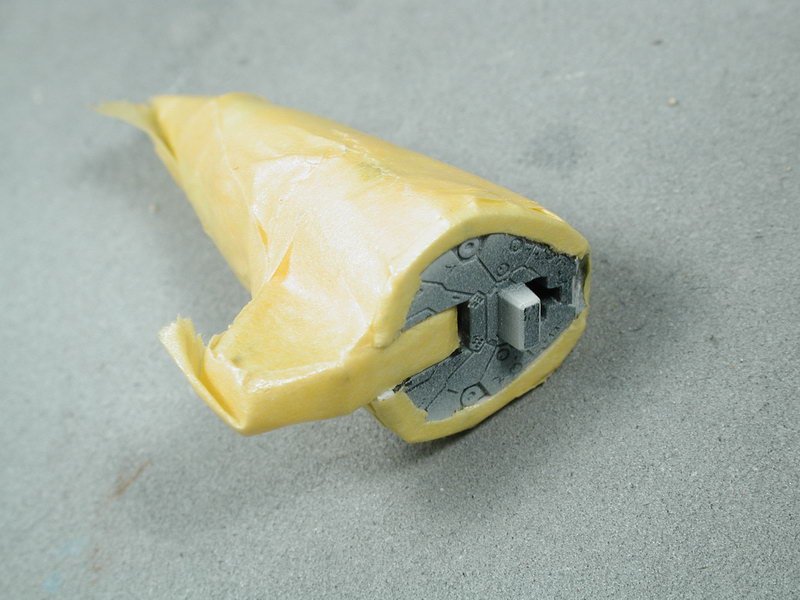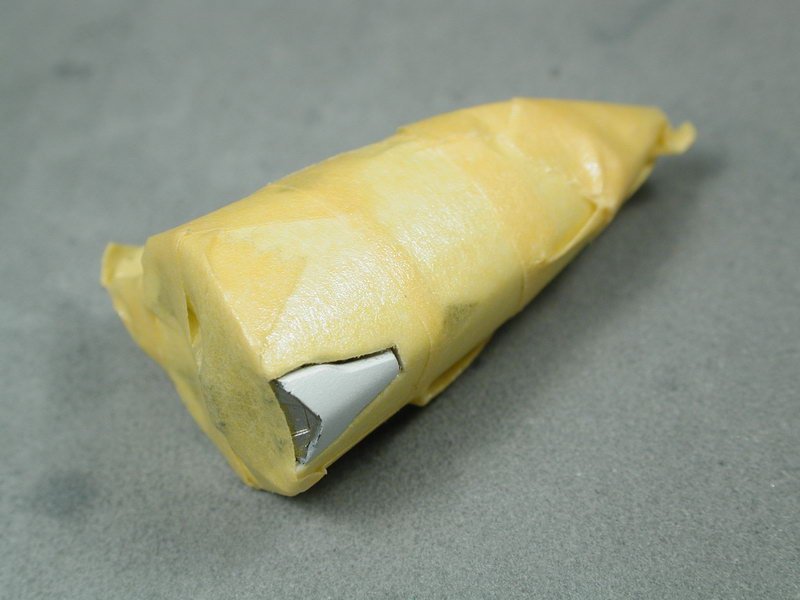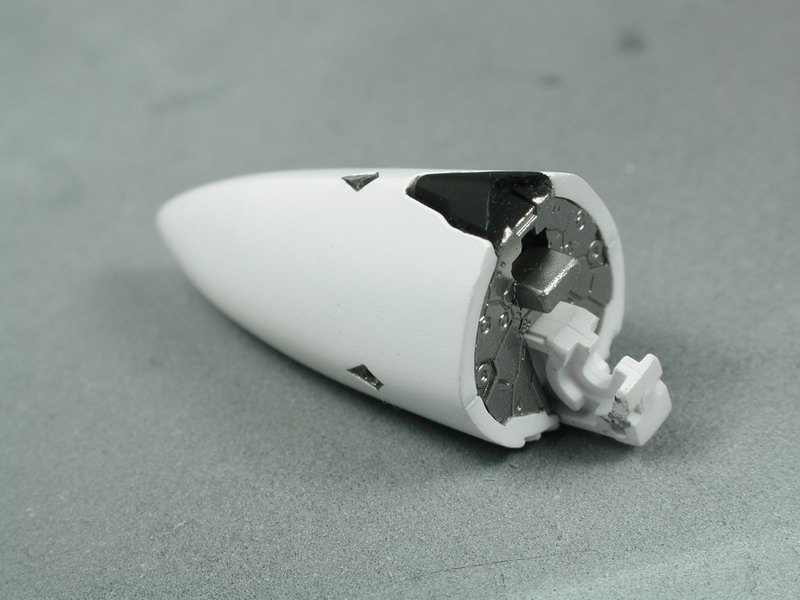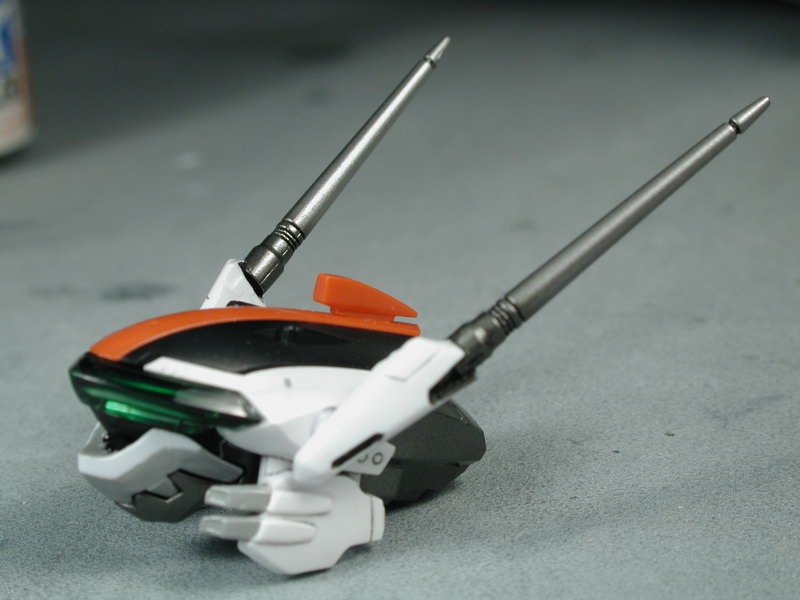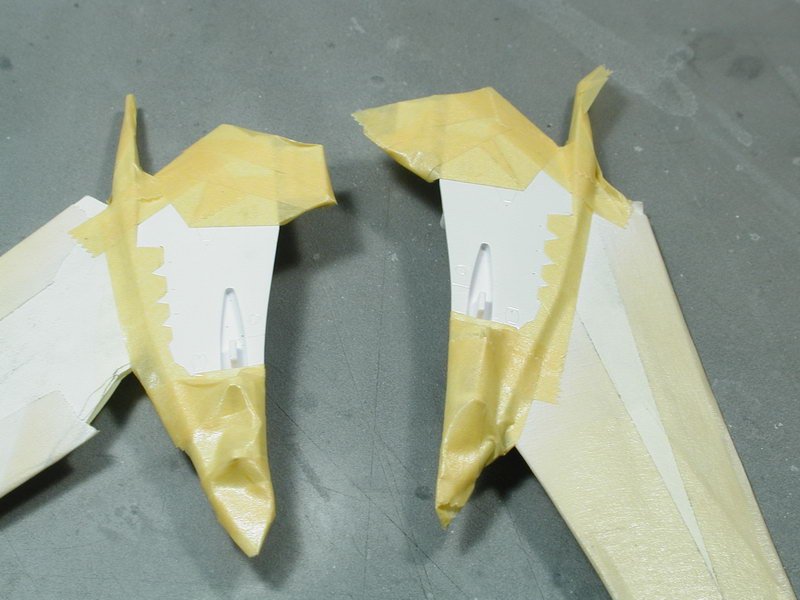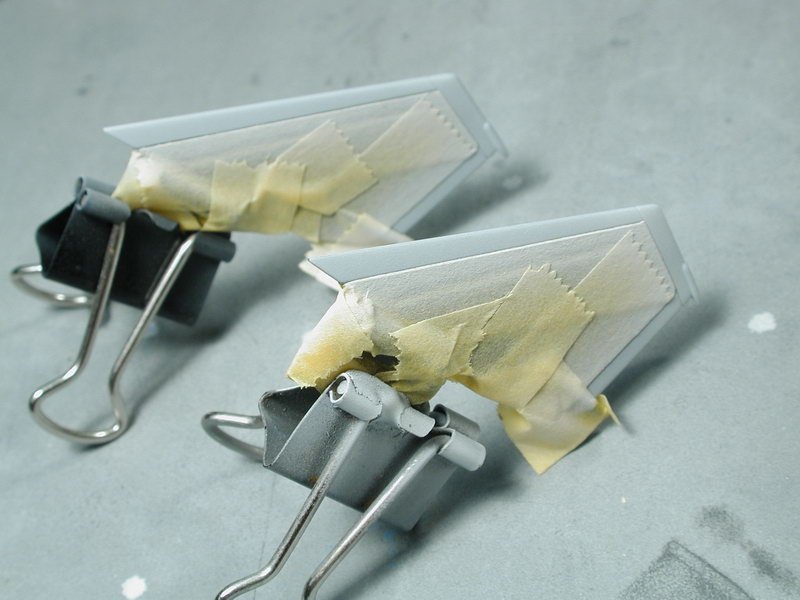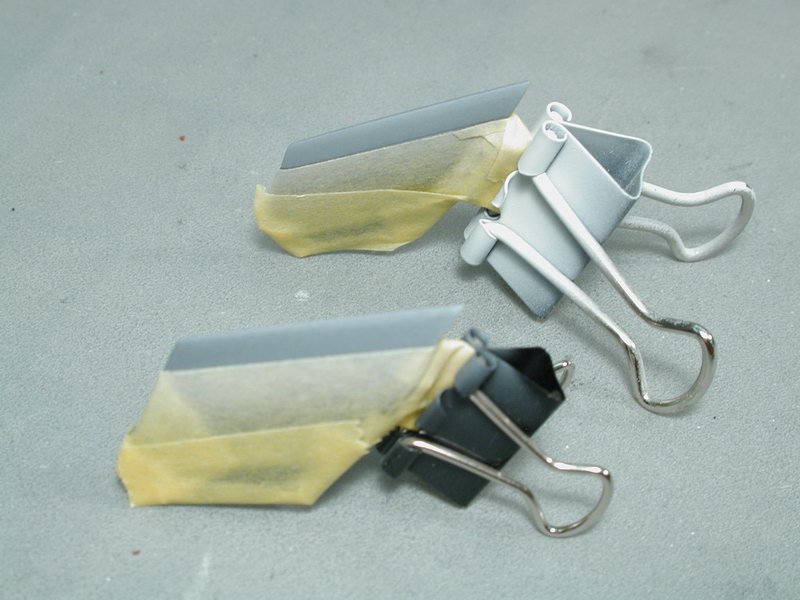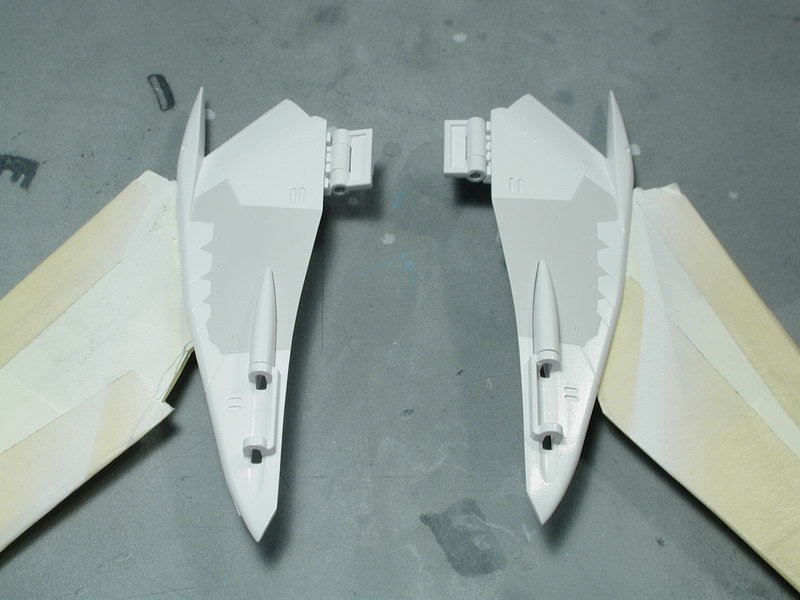-
Posts
4308 -
Joined
-
Last visited
Content Type
Profiles
Forums
Events
Gallery
Everything posted by wm cheng
-
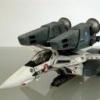
1/72 Bandai VF-25F Messiah build-up step-by-step (sort of)
wm cheng replied to wm cheng's topic in The Workshop!
Thanks so much Regult! I just hate it when they throw me the "all-chinese" menus at restaurants... and I have to ask for the "english" white folks ones... so embarassing! ;-) Can you translate what he said in my "Links to my step-by-step" thread? http://www.macrossworld.com/mwf/index.php?...mp;#entry744601 -

1/72 Bandai VF-25F Messiah build-up step-by-step (sort of)
wm cheng replied to wm cheng's topic in The Workshop!
Thanks all for the kudos! Yes, I'm not looking forward to transforming it, but I'm trying to take every precaution such as applying more layers of clear-coat to the areas that rub (which I will do the same after the decals are on it too). I don't intend to transform it often (after all it IS a model) I might just do it a few times in total (for the photoshoot of course) and will probably leave it in the plane mode afterwards. With all this work on the off-white panelling (which will be hidden by fast packs) and the fact that I glued and filled some seams that were required for disassembly for the fast packs (again... Bandai bones me! - seriously dumb design for the fast-packs attachment) I may just leave this one naked. Unless I can figure out a way of attaching the those fast packs without taking apart the whole model again. The vertical seam around the nose cone still bugs me, the gap is so big, I don't know what to do about it (If I glue it, then I can't transform it). Sorry penray, can anyone translate the Chinese... I'm ashamed to admit that I can't read Chinese even though I'm Chinese - argh! I assume its nice anyways... Unfortunately its not the magnets holding the shoulder parts together, its just a little massaging and tweaking to get all the little shoulder plates and pieces to properly align - however it is possible to do so, its just playing with the angles of the shoulder hinges and arms to lock underneath that will affect how the should plates lock on top of the plane. The magnets merely help tuck the leg pieces up to they sit higher (so the back of the chin tucks itself higher on the back of the plane) and brings/pulls down the dihedral of the wings so they are more horizontal with the ground (I think it looks weird to have the wings tilt up front head view). Although I suspect I wouldn't need these magnets for the fastpack version since the wing packs will probably droop the wings down a bit and I would guess the legs will have a different attachment point with the leg packs on. Right now its factory clean (and hopefully with the decals this weekend too!). With the exception of the wing swing sweep weathering (which I didn't think I could do after the back/wing roots are glued together). I will weather it slightly after all the decals are on to tie them in to the paint. Thanks for tuning in! Keep you're fingers crossed for me this weekend... -

1/72 Bandai VF-25F Messiah build-up step-by-step (sort of)
wm cheng replied to wm cheng's topic in The Workshop!
I finally get to put this bird together, all those many pieces lying around for so long - it was just begging for something to happen ;-( I also took this opportunity to apply an oil wash to pick out all the low lying areas and recessed panel lines and details. Similar to all my other models, I use a light grey for most of the panels, and going darker grey to a black for the moveable surfaces and vents. I used a light grey for the black parts. Its important to use a varying shades of grey oil washes to give the model some depth. I hand brushed some extra Model Master semi-gloss clear coat at all the areas where there are corners that come into contact with other pieces during movement and transformation - in vain hopes that this will delay any chipping that will eventually occur. I plan on doing this on top of the decals as well as spraying the entire model in several layers of clear-coat. The loaded brush lays on so much more/thicker clear coat than the airbrush. (at least thats my hopes). I hope to get a few more hours this weekend - my favourite part! DECALLING!! Oh, count me in as one of the many that is having one heck of a time trying to tint the canopy! Argh, I must of spent a mint trying different things out... here's a list of things that DON'T work; 1/ Humbro Purple Polycarbonate clear - remember that picture I posted at the beginning of the thread of that spray bottle ($12 worth!) - well it doesn't work, luckly I tried it on the clear sprue first, the laquer is too "hot" and actually etched into the styrene causing it to create a fine pebbly surface which would have ruined any clear un-distorted translucency. 2/ Food colouring dyes - remember that picture I posted at the beginning of the thread of that box ($5 worth!) - well it to doesn't work, I can't make a strong enough purple out of it, any tries at making the purple stronger resulted in a brown/black mixture - argh! 3/ Citadel purple wash - they no longer make the purple ink that HWR MKII used, its been replaced by the "Purple Wash" ($5 again!) and its not the same thing, its got a flattening matte agent in it now - although it worked better than the previous tries (I tried 3 times) it still wasn't satisfactory in my books - it kept leaving streaks as it dried and a matte frosted finish that ruined the translucency of the canopy. 4/ Yep, Tamiya red and blue do not combine to make a purple - it makes a muddy brown/black again... confirmed... 5/ I checked at 3 local hobby shops, there is no clear purple made for styrene plastics available! About $30 on various purple solutions and still none have worked yet... 6/ Lastly I went out to buy purple ink ($7 acylic for airbrush) which I will try to dilute and use in a Future dunk - wish me luck this weekend when I try! Hey, I just noticed the decidedly negative tone of this update... (I apologize, its just frustrating sometimes) I must say I'm not enjoying this build up as much as I have others in the past. It maybe because I have absolutely no time now with a toddler in tow and I am constantly exhausted. Or it could be that this Bandai kit is not orientated to the serious modeller - don't get me wrong, I applaud them for such ingenious engineering and the ability to get so many non-modellers building (which is always a good thing) - its just that I keep getting "boned" by Bandai everywhere I turn! I love this design! I just loathed to think I have to go through these hoops again three more times to get the full squadron (maybe by the next decade at my pace!). I may just bite the bullet and glue all others in a permanent mode! Keep your fingers crossed that I can sneak away some decalling time this weekend! ;-) -

1/72 Bandai VF-25F Messiah build-up step-by-step (sort of)
wm cheng replied to wm cheng's topic in The Workshop!
Yay! I finally get to install the hinged back/wing roots - this is the first time I see what the result of all those varying shades of grey... neat... a little strong for now, but as I mentioned I can tone it down later once I get the decals on and do a little weathering. I was much more subtle when I did my VF-0 and after the weathering, I lost all the panel variations, so I'm more obvious this time around. Masking... masking and more masking... some progress shots of the red markings on the black fins. Now if they just left the part white and provided decals it would have been soo much easier (ala Hasegawa!) I also decided to mask the fin intakes to spray them Alclad dark aluminum. I also clear-coated the Alclad steel feet thrusters with Tamiya clear yellow (mixed with some clear red and smoke to get a brown) and I dusted the tips with Alclad exhaust to give it a burnt edge look. Finally I took off all the various bits of mask and assembled the legs together! -

1/72 Bandai VF-25F Messiah build-up step-by-step (sort of)
wm cheng replied to wm cheng's topic in The Workshop!
Now here's another little annoying detail that is the fault of Bandai's dumb assembly process. The black stripes on either side of the forward fuselage do not go all the way back to the break point. Instead, they end at angles just behind the cockpit. But since I had to disassemble the forward fuselage I could glue the these black pieces in either side to putty and fill that seam, so I decided to just paint that part white and allow the seam to run though as a panel line. -

1/72 Bandai VF-25F Messiah build-up step-by-step (sort of)
wm cheng replied to wm cheng's topic in The Workshop!
Ok... another long awaited update! Believe me it pains me to see this beautiful kit lay in pieces for so long. The short of it; great design, beautiful lines but a bitch of a kit to build properly!! argh... Okay, I finally asked for a "golf day" from my wife (all the other dad's get to go away for golfing - so I figure since I don't play golf, I'll ask for a day too to build my model!) So many pieces all with so much masking! Firstly I masked the black or dark grey strips on the chin piece (I don't get why Bandai chose to decal some stripes and not others - sloppy if you asked me!). I also masked the nosecone, its really a horrible process of assembly whereby if you intend to glue the nose together to get rid of that nasty seam line, Bandai forces you assemble all the parts for the nosecone to be glued in first, then you have to jump through hoops to mask the interior detail. I masked for the metalized interior with Alclad first, then the black nose piece. (do you get the impression I'm not so happy with Bandai right about now?) - don't get me started on having to paint and decal the wings first, then glue together the wing root and masking the entire wing to paint the back/chestplate piece. I also hand painted some details of the head, the chin grey stripes and cheek intakes and the "mouth". My hand painting skills are somewhat lacking, that's why I mask and spray everything (I honestly don't know what I'd do with an airbrush!) Hearing that the Bandai decals are too small or don't cover the black fins well, I decided to also mask them and paint the edges white (especially where there are odd antenna bumps and stuff, nothing adheres to weird shapes as paint!). Plus I wanted a white background to paint the red stripes onto - it would take too many coats of red to get a true red on a black background, so I painted the areas underneath the red white first. I masked the wing roots / back plate area in a lighter off-white to vary up the white a bit so I get some shades of grey happening to add interest to an otherwise white plane. It stands a bit strong now, but when I add the very high contrast black decal markings and do a bit of weathering over top of it and some light post shading, it should all tie itself together a little more naturally. -

Bandai 1/72 Scale Macross Frontier Model Kit Thread Ver.3
wm cheng replied to azrael's topic in Hall Of The Super Topics
How did you get that purple tint? -
Sorry to beat a dead horse, but has anyone? ANYONE? gotten the Ace Combat flight stick and throttle to work with the PS3?
-
Has anyone gotten the PS2 Ace Combat HOTAS controllers to work with this game? (demo) If so how?
-
Wow! These may be my initiation into the world of 1/60... is it me or do they look a little stubby? Maybe I'm just used to the sleeker 1/48s... ;-)
-
I have to agree! The way Bandai made the super packs is totally ass-backwards! It doesn't need to be so complicated, it was clearly an afterthought (and I don't think they put much thought into it at all!). It too has took the wind out of my sails for completing my kit recently. It looks like I might build one with the packs on permanently and one without the packs - its certainly not something that can be taken on and off at will. If I get time, I might look at the possibility of modifying them, but not in the near future (I still gotta finish my first VF-25F!!). In fact Bandai had made a lot of poor design decisions with this kit (it might look good in the end, but its a real pain to build properly). The stand hookup thingy in the aircraft mode is just totally stupid and again another afterthought... argh... don't get me started again... ;-(
-
Hey, has anyone gotten their Ace Combat flight controllers to work with the PS3? I tried to use it with WipeOut HD and Hawx and it doesn't seem to recognize any other controllers other than the regular bluetooth Dualshock - its there some setting or driver I need to get the PS3 to recognize the Ace Combat HOTAS stick/throttle combo? Gran Turismo demo recognized my GT wheel from my PS2.
-
Yes, I use PS3MS and its an amazing program. Yes, its probably your WiFi, I've switched to a wired Ethernet now and can stream 1080p MKV files with DTS surround no problem! Highly recommend it!
-
Yeah, they really should of included both sticker and decals. I find that this kit is so complicated and unfriendly towards model makers that a lot of the "fun" has been taken out of it for me (partly due to the fact that its taking so long for me to free up anytime to spend on it) - but I remember the days when I could snap together something in an afternoon and zoom it around the room! Ah, much simplier times then - more fun in the building process - now, its a bit tedious at time, but a bit more satisfaction in the end admiring your masterpiece. ... to be young again... ;-)
-
Thanks Dangard Ace, Never heard of HAWX, but it looks ok - has anyone here tried it? Might be worth the download. I wonder if it will work with the Ace Combat HOTAS system?
-
Is any hope of Ace Combat for PS3 dead? I haven't heard anything in so long. Is there any good Flight Sims for PS3?
-
Wow! Great work everyone!! please keep posting, I'm amazed how much building everyone is getting. I can't even seem to finish my first one?! The best thing about this Bandai kit I feel is that its gotten a lot of potential modelers or toy enthusiasts building - which is great! I hope to get back to my model... someday, when the schedule of life permits... ;-(
-
Its rock solid stable - no loss connections at all (I do have a wired Ethernet connection to the router though). Best part is that its able to stream DTS and DD 5.1 to the PS3 which was previously downmixed to Dolby Surround. I have it streaming 1080p MKV files with DTS 5.1 to my 100" screen in the basement being projected by a Panasonic PT-AE2000 (1080p) projector and the picture quality is almost indistinguishable from blu-ray!
-
Or try PS3 Media Server (I was using TVersity before, but this is much better!) http://code.google.com/p/ps3mediaserver/ Even supports folder.jpg and video file coverart. Plus it plays way more different formats.
-
Thanks alfye for posting those links, Upon studying the pictures and assembly instructions, I am quite disappointed with Bandai's design - essentially it seems obvious that it was an afterthought with the amount of disassembly and parts replacement involved. Just as the way they chose to break down the parts and assembly process of the Vf-25 itself, my painting and masking is painfully slow since I have to constantly break things apart and have other steps wait for the paint process (unlike Hasegawa who always breaks down the model with the modeler in mind and the steps required to paint and finish the kit properly). They are definitely not a modeler friendly company, they just want you to snap the parts together without paint like a toy. (they just want to produce toys without paying for the labour of someone assembling it first! argh) For anyone wanted to do more than that, they certainly don't make it easy! Personally, it has put a real damper on my very slow build of my VF-25 and according their instructions (its pretty frustrating to do properly), I may have to pry apart quite a few parts which I have glued together and filled and sanded away the seams. I hope that once I get the kit itself, I may be able to improvise some other alternative way of attachment of some of these pieces. Rant aside, its an amazing design (but that's not to credit Bandai) and will look fantastic when completed. The up-side of Bandai making these kits is that they have lured a lot of other people that would otherwise not build a model to start building something - and that's always good for the hobby. Plus you get a pretty decent looking toy for not much effort. I just wished a "real" model company like Hasegawa were to create Macross Frontier kits as well that were a little more friendly to build and finish properly. I'm just mad I have to probably undo so much of what I've done already to accommodate these packs ;-( (the real kicker is that I haven't done that much, its just what little I've done seems to be in the way of the packs - argh...)... just another thing to deter me from finishing it up!
-
I'm so glad someone re-surfaced this thread! I never caught it around the first time (daddy-hiatus!)... But WOW! Fantastic builds, they look absolutely beautiful. Keep up the great work and keep posting, it gives me my modeling fix even though I don't have time for anything right now. I absolutely love the VF-4! Love the canon scheme.
-
Wow! congrats Cool8or... what a fantastic collection. How could I have missed this thread... oh, yeah, my daughter was 1 year old when this thread started, so I was on a bit of a daddy-hiatus last year. Anyways, fantastic builds... I'm so glad you're building and enjoying your beautiful collection (instead of hoarding... hmm, I have too many things un-built ;-( Keep up the great work and I look forward to many more picture intensive postings! p.s. where did you get the decals for John's Pod? mine didn't come with decals...
-
Fantastic work so far KyeKye! Thanks for posting a WIP too, now I can get my fix too! Haven't had any time to work on mine yet, but this will do... I love how your last VF-25 turned out, keep up the good work. All these little details really make a huge difference.
-

1/72 Bandai VF-25F Messiah build-up step-by-step (sort of)
wm cheng replied to wm cheng's topic in The Workshop!
Nope, I didn't prime the parts with gloss black, however, they do look a lot better if you did that. Not even onto primer (which is recommended too) - I was in too much of a rush, it still turned out okay. With the Chrome or Polished Aluminum you must prime with gloss black first, but these darker colours (Steel & Dark Alumn.) you can get away with it if you're as lazy as me ;-) Yeah, I was thinking of the canopy and going that route, but it will be so much more sanding (I hate sanding more than anything else!) and polishing, I haven't decided yet. I originally planned to open up the cannon exhaust ports, but I got cold feet, I wanted to see if it would affect transformation first, then I got lazy... The biggest deal breaker for me is that I would have to thin the plastic down around the port openings so it would look like an aircraft skin in scale, the holes is easy, its thinning the surrounding openings evenly that is the trick to making it look "real". Its whenever you can see the thickness of the plastic that throws you out of the illusion of scale. Its not out of the question yet. Thanks for the vote of confidence on the decals, my painting skills aren't THAT good - plus I'm just not into self torture! ;-) I LOVE decals, and I would use decals for everything if I could (I used decals for the Hasegawa VF-1's tailfins, that's how lazy I am!). I wished we had decals for the canopy frames - Hasegawa spoiled me! Lastly, I don't think it's a vent in the picture, just some panel detail that I wanted to make silver (personal preference license). With all the metallic details hidden in the aircraft mode, I thought this was a good opportunity to liven the upper surface up a bit. Sorry, no update this weekend... Happy Chinese New Year!!

